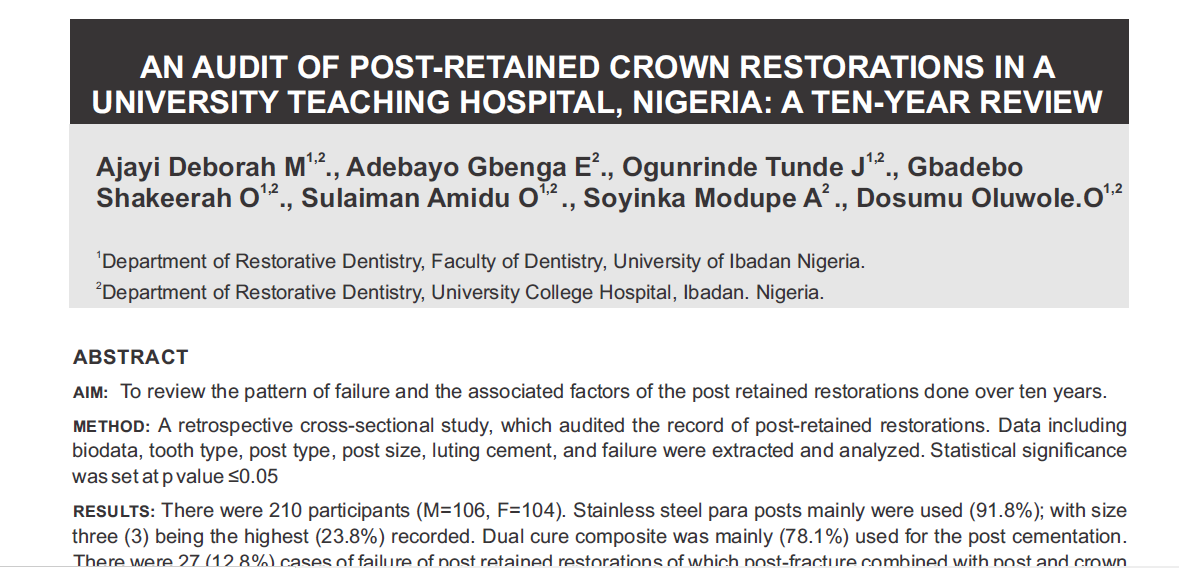AN AUDIT OF POST-RETAINED CROWN RESTORATIONS IN A UNIVERSITY TEACHING HOSPITAL, NIGERIA: A TEN-YEAR REVIEW
Keywords:
audit, post-retained crown, failureAbstract
AIM: To review the pattern of failure and the associated factors of the post retained restorations done over ten years.
METHOD: A retrospective cross-sectional study, which audited the record of post-retained restorations. Data including biodata, tooth type, post type, post size, luting cement, and failure were extracted and analyzed. Statistical significance was set at p value ≤0.05.
RESULTS: There were 210 participants (M=106, F=104). Stainless steel para posts mainly were used (91.8%); with size
three (3) being the highest (23.8%) recorded. Dual cure composite was mainly (78.1%) used for the post cementation.
There were 27 (12.8%) cases of failure of post retained restorations of which post-fracture combined with post and crown
dislodgement had the highest (52%), with the tooth fracture being the least reported (14.8%). Post fracture only was
commoner in males (66.7%). The majority (81.5%) of the failure was seen in the para post group, with no tooth fracture
reported for the fibre post.
CONCLUSION: Post and core placement is a common procedure for restoring endodontically treated teeth with a reduced
coronal structure for the main purpose of retaining the core and, ultimately, the restoration. Stainless steel post was the
commonest used, and post-fracture combined with dislodgement of post and crown constituted the most prevalent failure
reported.






